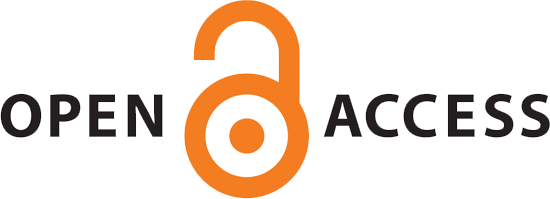The Effect of Dexmedetomidine and Ketamine on Core Body Temperature Changes in Children Undergoing Sedation During MRI
Abstract
Background: Magnetic resonance imaging (MRI) is widely used for diagnosing various diseases. This technique may lead to an elevation in temperature within the targeted imaging area, while intravenous anesthetics may induce hypothermia, particularly in pediatrics. The impact of different anesthetics on core body temperature in children undergoing such procedures has been partially explored with agents such as propofol and ketamine; however, findings associated with dexmedetomidine remain contentious. Therefore, this study aimed to investigate the influence of dexmedetomidine and ketamine on core body temperature in the pediatric population during MRI procedures.
Methods: This study was a prospective, randomized, double-blind clinical trial conducted on children aged 6 months to 10 years who underwent MRI and anesthesia at Mofid Hospital (Tehran, Iran) in 2025. Patients were randomly assigned to receive ketamine and dexmedetomidine for performing an MRI. Demographic, hemodynamic, and sedation data were compared between the two groups. The significance level was considered less than 0.05.
Results: Twenty-six pediatrics were assessed in each group receiving dexmedetomidine and ketamine. The sedation scores did not demonstrate significant differences between the two groups (P value: 0.55). Dexmedetomidine exhibited significantly lower heart rates (P value: 0.001) and core body temperatures (P value: 0.02).
Conclusion: Dexmedetomidine significantly reduces heart rate and core body temperature compared to ketamine in pediatrics undergoing MRI.
[2] Mallory MD, Travers C, Cravero JP, Kamat PP, Tsze D, Hertzog JH. Pediatric sedation/anesthesia for MRI: results from the pediatric sedation research consortium. J Magn Reson Imaging. 2023;57(4):1106-13.
[3] Pedersen N, Jensen AG, Kilmose L, Olsen K. Propofol‐remifentanil or sevoflurane for children undergoing magnetic resonance imaging? A randomised study. Acta Anaesthesiol Scand. 2013;57(8):988-95.
[4] Sangi S, Kiaei MM, Maroufi SS, Aligholizadeh M, Moradimajd P, Saei A. Shivering management in spinal anesthesia: evaluating the role of ketamine: a narrative review. Arch Anesth Crit Care. 2024;11(1):95-102.
[5] Tariq MA. Use Of Ketamine Plus Midazolam Versus Ketamine Alone In Prevention Of Shivering During Spinal Anaesthesia: A Randomized Controlled Trial. Khyber Med Univ J. 2014;6(1).
[6] Arshad M, Qureshi WA, Ali A, Haider S. Frequency of hypothermia during general anaesthesia. Pak J Med Health Sci. 2011;5(3):549-52.
[7] Weerink MA, Struys MM, Hannivoort LN, Barends CR, Absalom AR, Colin P. Clinical pharmacokinetics and pharmacodynamics of dexmedetomidine. Clin Pharmacokinet. 2017;56(8):893-913.
[8] Lee S. Dexmedetomidine: present and future directions. Korean J Anesthesiol. 2019;72(4):323-30.
[9] ASo A. ASA physical status classification system. ASA House of Delegates. 2014.
[10] Fullerton Z. Temperature changes in paediatric patients undergoing Magnetic Resonance Imaging: A Red Cross War Memorial Children's Hospital experience [Internet]. Cape Town: University of Cape Town; 2017 [cited 2024 May 30]. Available from: http://hdl.handle.net/11427/27367
[11] Machata A-M, Willschke H, Kabon B, Prayer D, Marhofer P. Effect of brain magnetic resonance imaging on body core temperature in sedated infants and children. Br J Anaesth. 2009;102(3):385-9.
[12] Cronin JA, Shen C, Rana S, Fricke ST, Matisoff A. Association between magnetic resonance imaging in anesthetized children and hypothermia. Pediatr Qual Saf. 2019;4(4):e181.
[13] Pacheco GS, Ferayorni A. Pediatric procedural sedation and analgesia. Emerg Med Clin. 2013;31(3):831-52.
[14] Mahmoud M, Mason K. Dexmedetomidine: review, update, and future considerations of paediatric perioperative and periprocedural applications and limitations. Br J Anaesth. 2015;115(2):171-82.
[15] Plambech M, Afshari A. Dexmedetomidine in the pediatric population: a review. Minerva Anestesiol. 2014;81(3):320-32.
[16] Lepeltier H, Lepetit A, Gauberti M, Escalard C, Salaun J-P, Bénard C, et al. Dexmedetomidine sedation vs. inhaled general anesthesia for pediatric MRI: A retrospective cohort study: Dexmedetomidine sedation vs. inhaled general anesthesia for MRI. Arch de Pédiatr. 2022;29(3):213-8.
[17] Bali A, Dang AK, Gonzalez DA, Kumar R, Asif S. Clinical uses of ketamine in children: a narrative review. Cureus. 2022;14(7).
[18] Simonini A, Brogi E, Cascella M, Vittori A. Advantages of ketamine in pediatric anesthesia. Open Med. 2022;17(1):1134-47.
[19] Eldeek AM, Elfawal SM, Allam MG. Sedation in children undergoing magnetic resonance imaging comparative study between dexmedetomidine and ketamine. Egyptian J Anaesth. 2016;32(3):263-8.
[20] Qiu J, Luo Z. The comparison of dexmedetomidine and ketamine for pediatric dental surgery: A meta-analysis of randomized controlled studies. Medicine. 2019;98(17):e15068.
[21] Gyanesh P, Haldar R, Srivastava D, Agrawal PM, Tiwari AK, Singh P. Comparison between intranasal dexmedetomidine and intranasal ketamine as premedication for procedural sedation in children undergoing MRI: a double-blind, randomized, placebo-controlled trial. J Anesth. 2014;28(1):12-8.
[22] Paul D, Kaur Kb, Ray A, Jaiswal A, Kate S, Bhengra A. Effectiveness of Dexmedetomidine vs Ketamine in Paediatric Patients Undergoing MRI. J Clin Diagn Res. 2020;14(11).
[23] Kim JY, Kim KN, Kim DW, Lim HJ, Lee BS. Effects of dexmedetomidine sedation for magnetic resonance imaging in children: a systematic review and meta-analysis. J Anesth. 2021;35(4):525-35.
| Files | ||
| Issue | Article in Press |
|
| Section | Research Article(s) | |
| Keywords | ||
| Dexmedetomidine ketamine Magnetic resonance imaging pediatric | ||
| Rights and permissions | |

|
This work is licensed under a Creative Commons Attribution-NonCommercial 4.0 International License. |




